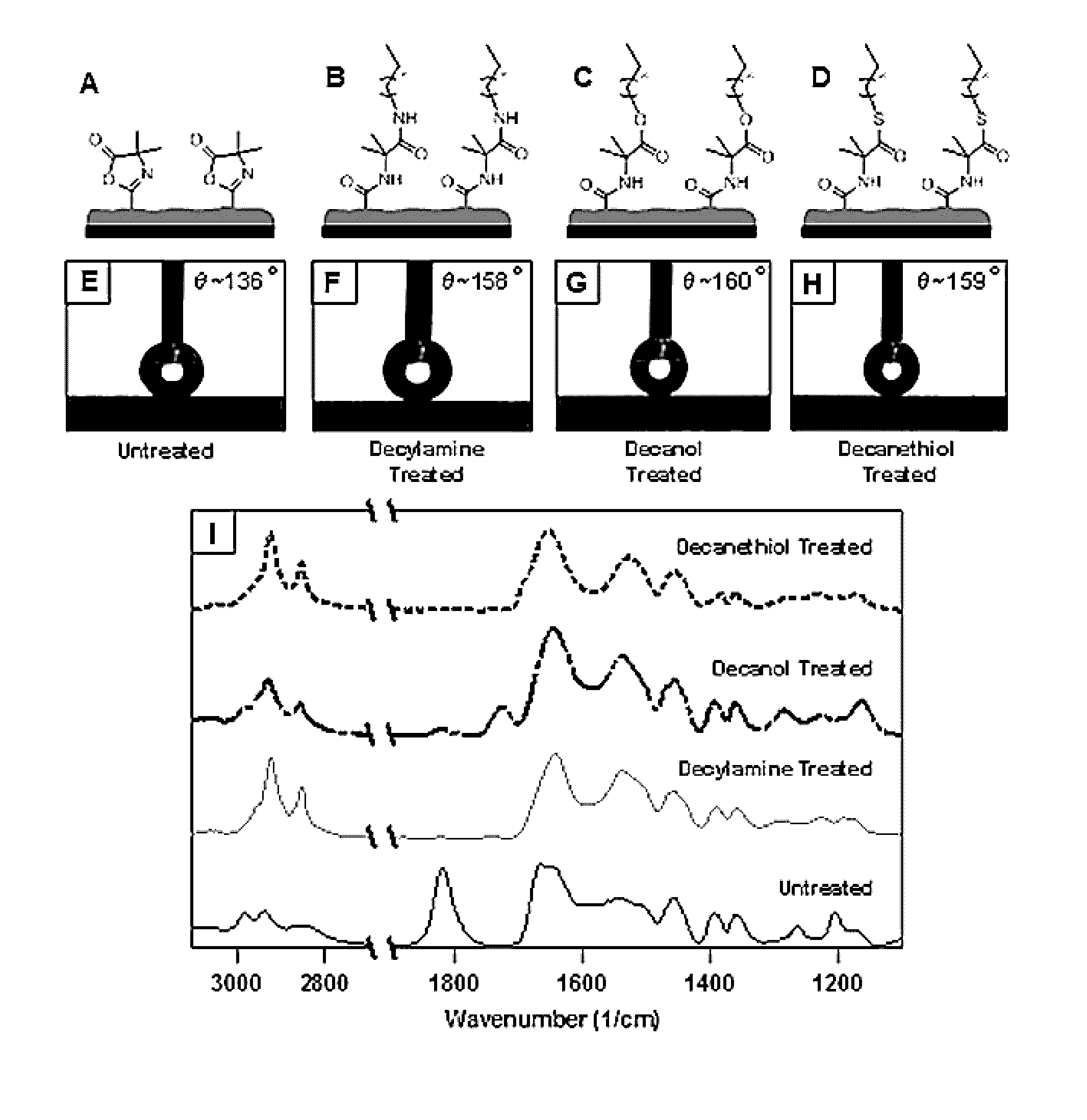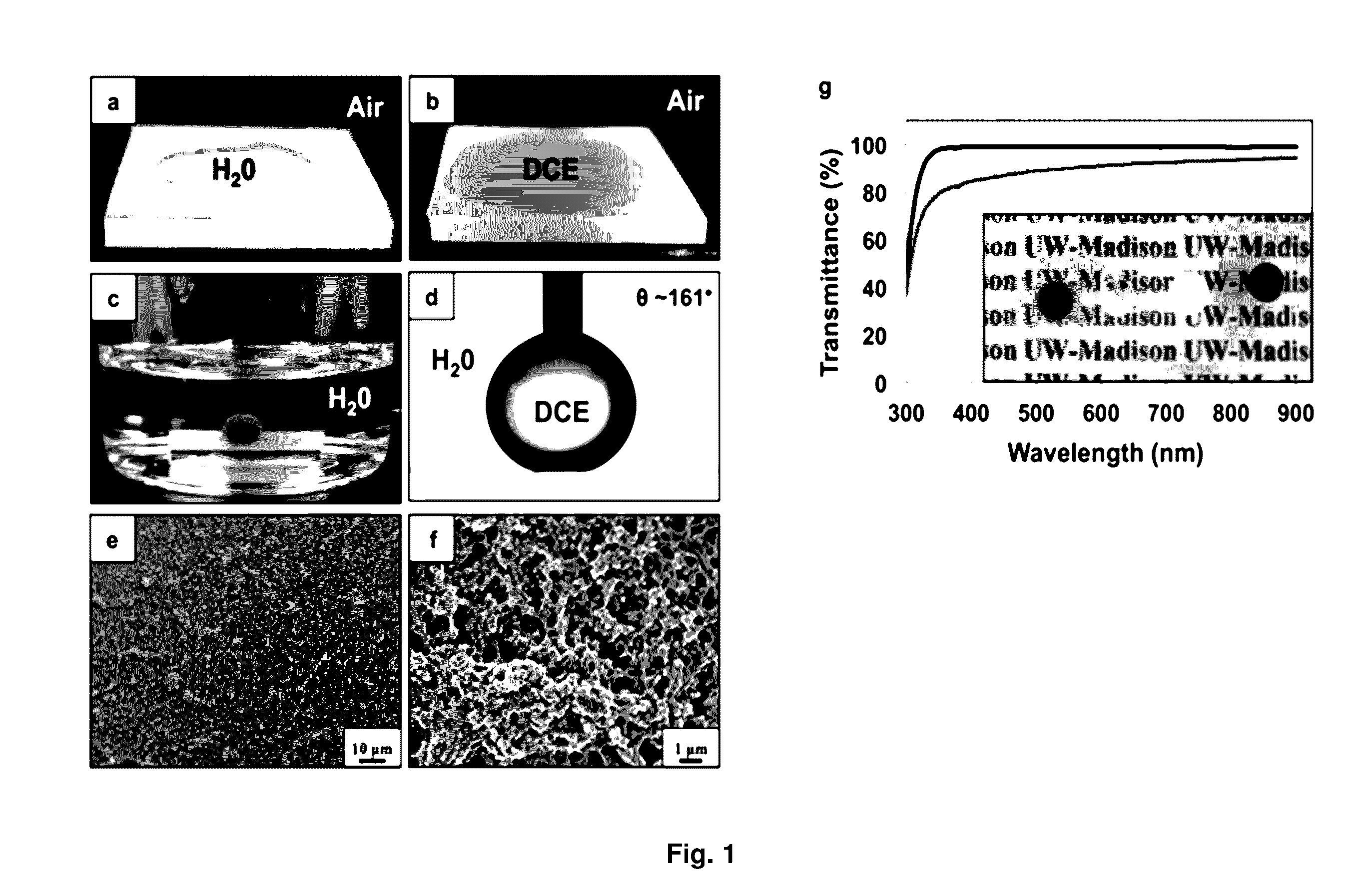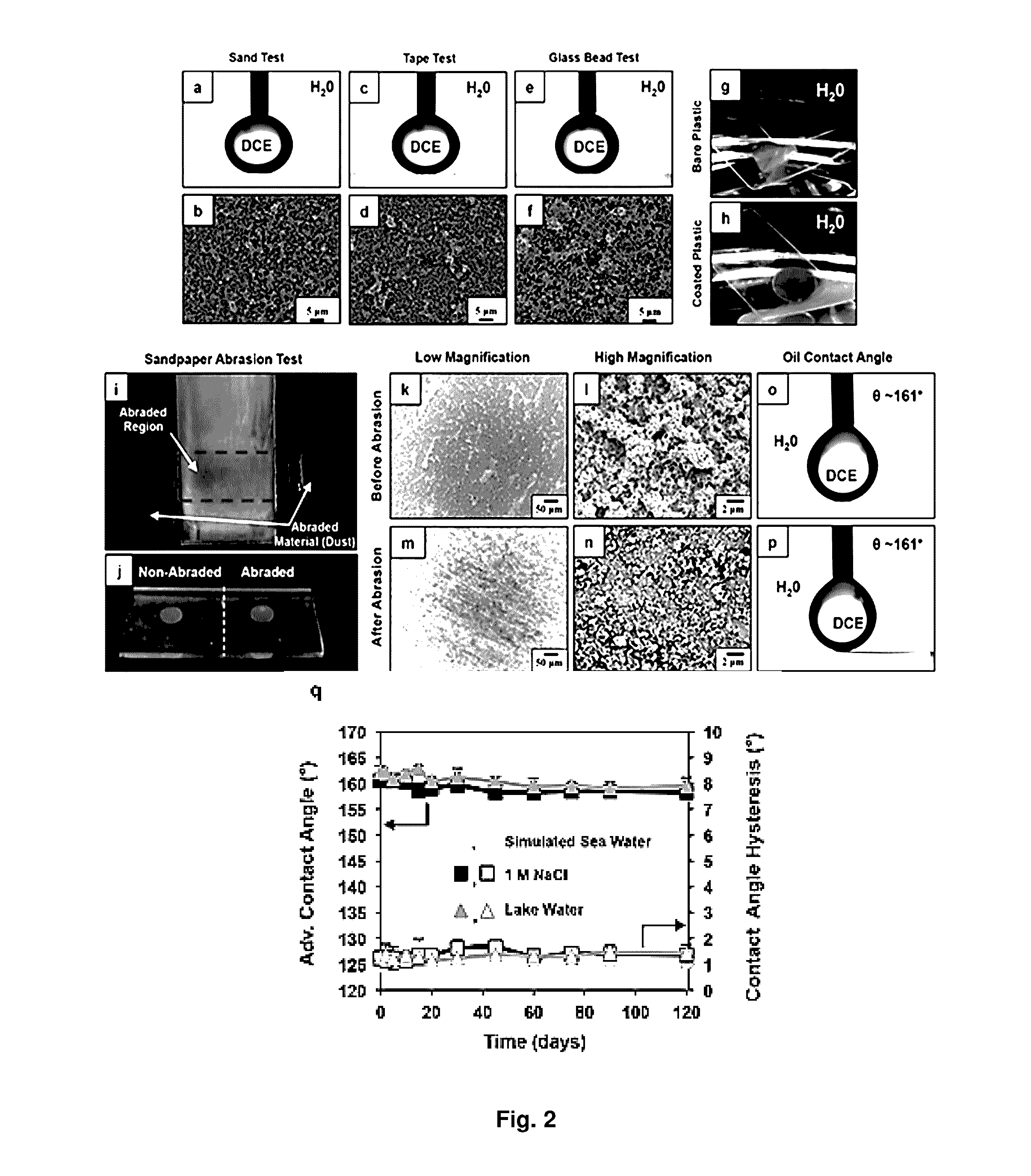Synthetic Surfaces with Robust and Tunable Underwater Superoleophobicity
a technology of underwater superoleophobicity and synthetic surfaces, applied in the direction of biocides, antifouling/underwater paints, coatings, etc., can solve the problems of limited means to tune non-wetting behavior or define, soft surfaces and coatings that are susceptible to physical damage or disruption
- Summary
- Abstract
- Description
- Claims
- Application Information
AI Technical Summary
Benefits of technology
Problems solved by technology
Method used
Image
Examples
example 1
Fabrication and Characterization
[0083]In one approach, the fabrication is performed using covalent layer-by-layer assembly of polymer bilayers using branched poly(ethyleneimine) (PEI) and the amine-reactive polymer poly(vinyl-4,4-dimethylazlactone) (PVDMA) (Buck et al., Adv. Mater. (2007), 19:3951). This approach yields multilayer films and coatings that are chemically crosslinked (owing to the formation of chemically stable amide / amide linkages during assembly) (see Buck et al., Adv. Mater. (2007), 19:3951) and contain amine-reactive azlactone groups that can be used to define and tailor interfacial properties after assembly (by treatment with molecules containing primary amines) (see Buck et al., Biomacromolecules (2009), 10:1564; Buck et al., ACS Appl. Mater. Interfaces (2010), 2: 1421; Broderick etal., Chem. Mater. (2012), 24:1786; and Manna et al., Adv. Mater. (2012), 24:4291).
[0084]A series of initial experiments was performed to compare the interfacial properties of PEI / PVDMA...
example 2
Tolerance to Physical, Chemical, and Environmental Challenges
[0087]The crosslinked and porous features of these coatings combine to endow them with remarkable tolerance to a wide range of different physical, chemical, and environmental challenges that can compromise non-wetting interfaces and are well-known to damage or disrupt hydrogels and polyelectrolyte assemblies used to design other synthetic underwater oil-repellant surfaces. The morphologies and wetting behaviors of the coatings were characterized using two tests for characterizing the durability of conventional non-wetting surfaces (Deng et al., Science (2012), 335: 67; and Deng et al., Adv. Mater. (2011), 23:2962). In the first test, sand grains were dropped onto dry coatings from a height of 20 cm (FIG. 2A and FIG. 2B; setup shown in FIGS. 8A and 8B). In the second test, adhesive tape was applied with a pressure of ≈445 kPa and then peeled off (FIG. 2C and FIG. 2D). No large-scale erosion, cracking, or peeling was observe...
example 3
Chemical Manipulation and Spatial Patterning of Underwater Oil Adhesiveness
[0092]The reactive process used to assemble these crosslinked multilayers leaves behind residual azlactone groups that enable installation of secondary surface functionality (e.g., glucamine) (see Buck et al., Adv. Mater. (2007), 19:3951). This unique feature allowed for the systematic varying and characterization of the impact of different chemical motifs on non-wetting properties while maintaining all other nano and microscale topographic features constant (FIG. 3A). Surfaces treated to present positively or negatively charged groups (quaternary amines (2) or carboxylates (3); FIG. 3A) remained hydrophilic and exhibited underwater oil contact angles of ≈158° (hysteresis ≈1°). Combined with the results above for hydroxyl-functionalized films, these results reveal surface hydrophilicity itself, and not the specific chemical nature of the groups that confer it, to be the principal chemical factor impacting mai...
PUM
| Property | Measurement | Unit |
|---|---|---|
| thickness | aaaaa | aaaaa |
| contact angle | aaaaa | aaaaa |
| temperatures | aaaaa | aaaaa |
Abstract
Description
Claims
Application Information
 Login to View More
Login to View More - R&D
- Intellectual Property
- Life Sciences
- Materials
- Tech Scout
- Unparalleled Data Quality
- Higher Quality Content
- 60% Fewer Hallucinations
Browse by: Latest US Patents, China's latest patents, Technical Efficacy Thesaurus, Application Domain, Technology Topic, Popular Technical Reports.
© 2025 PatSnap. All rights reserved.Legal|Privacy policy|Modern Slavery Act Transparency Statement|Sitemap|About US| Contact US: help@patsnap.com



